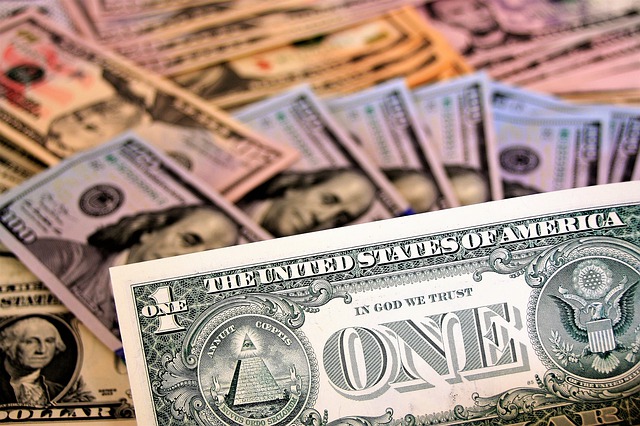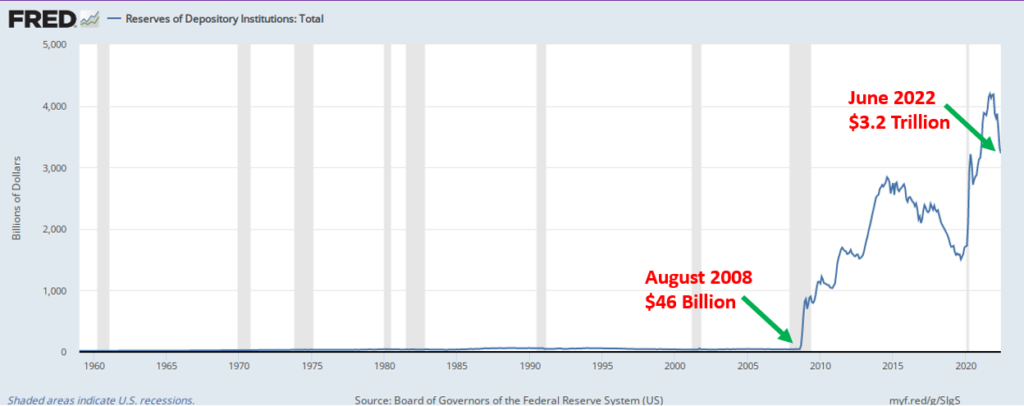
Updated 6/13/2024 Jacob Reed
1. What is monetary policy? Monetary policy is how a country’s central bank works to achieve the economic goals of price stability and full employment. Central banks use monetary policy tools to change interest rates.

Those changes in interest rates change the quantity of investment (and other interest rate sensitive spending), which shifts the aggregate demand curve in the AS/AD model. That AD shift can change the price level to achieve price stability and change real output to achieve full employment.
2. What is Ample vs Scarce (limited) reserves?
Until recently the world’s economies operated in a system of scarce or limited reserves. That means banks loaned out nearly all of their excess reserves. With limited reserves in the banking system, small changes to the amount of bank reserves dramatically change the money supply and with that, the nominal interest rate in the money market. Central banks operating in a scarce reserves system use open market operations, the discount rate, and the reserve requirement to change the bank reserves and the nominal interest rate.
During the recession of 2008, the amount of reserves within the US banking system dramatically increased. Banks stopped loaning out nearly all of their excess reserves and old monetary policy tools became less effective at impacting the nominal interest rate. As a result, the Federal Reserve (and other central banks with an ample reserves system) must use new tools to change the nominal interest rate. The primary monetary policy tool is now Interest on Reserves.
In both systems, changes in the interest rate are used to achieve the goals of full employment and stable prices. Central banks work to lower interest rates to fight unemployment (to close a recessionary gap) and raise interest rates to fight inflation (to close an inflationary gap).

3. How does Monetary Policy work in a scarce reserves system?
In a scarce reserves system, 3 tools are used to shift the money supply and change the nominal interest rate in the money market. Each of those tools is described below:
Open market operations (the preferred tool of central banks with a scarce reserves system) include just 2 things: buying and selling government bonds (securities). When central banks buy bonds, the bond sellers deposit the proceeds in checking accounts. That increases excess reserves in the bank, allowing them to make more loans. More loans increases the money supply and decreases the nominal interest rates. When the central bank sells bonds the public buyers pay with money from their checking accounts. The money supply decreases and the nominal interest rate rises.
Note: You could see questions on your exams asking about open market policies or open market actions. These questions are about buying or selling bonds. These questions are not asking about discount rates or reserve requirements.
The reserve requirement (or required reserve ratio) is the percentage of demand deposits (or checkable deposits) which cannot be loaned out. If the reserve requirement is 10% and a customer makes a $1000 deposit, the bank may loan out $900 of excess reserves while keeping $100 of required reserves on hand. Decreasing the reserve requirement increases the loans banks can make. New loans increase the money supply and decrease the nominal interest rate in the money market. Increasing the reserve requirement decreases the money supply and increases the nominal interest rate.
The discount rate is the interest rate banks are charged when they borrow money from the central bank. If banks do not have enough money to cover the required reserves, they may borrow money from the central bank and pay the discount rate for the short-term (overnight) loan. Increasing the discount rate makes it more expensive for banks when they don’t have enough to cover their required reserves. That causes banks to loan less money, which decreases the money supply. Decreasing the discount rate makes it less expensive for banks when they don’t have enough funds to meet their required reserves. That causes banks to loan more, which increases the money supply.
All 3 of the above tools are used to target the interest rate banks charge each other for overnight loans. That interbank rate impacts all other interest rates in the economy. This rate is called the policy rate and is known as the Federal Funds Rate in the United States (but the US Federal Reserve uses the ample reserves framework).
Contractionary Monetary policy is used to fight inflation. In a scarce reserves system a central bank can sell bonds on the open market, increase the discount rate, and/or increase the reserve requirement. Any of those actions will decrease the money supply and increase the nominal interest rate.